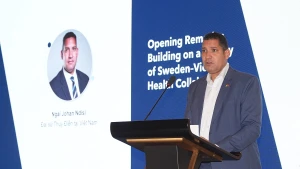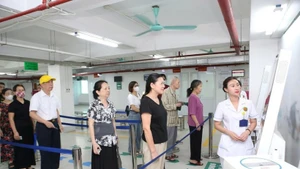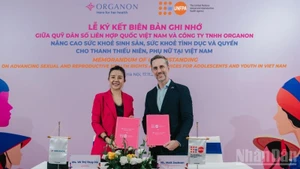Transcatheter pulmonary valve replacement is a minimally invasive surgery to replace a failing pulmonary valve, said Dr. Cao Dang Khang, head of the hospital’s pediatric cardiovascular surgery department.
The procedure helps improve blood flow with lower risk of infection and faster recovery than open surgery, he said.
The hospital has so far performed the procedure for five patients with repaired tetralogy of Fallot.
Tetralogy of Fallot, a birth defect that affects normal blood flow through the heart, accounts for between 5% and 10% of all congenital cardiac defects, cardiologists said.
A young patient from Binh Duong was diagnosed with tetralogy of Fallot and was treated by surgery at the hospital when she was two years old.
She then had regular follow-up visits with pediatric cardiologists at the hospital after the surgery.
Doctors said that blood flow to the lungs may still be restricted after tetralogy of Fallot surgery and patients with repaired tetralogy of Fallot may have a leaky pulmonary valve and need to have their pulmonary valve replaced.
The 14-year-old patient has recently undergone transcatheter pulmonary valve replacement that took two hours at the hospital.
Her health condition is now stable and she lives an active life after the surgery.
















